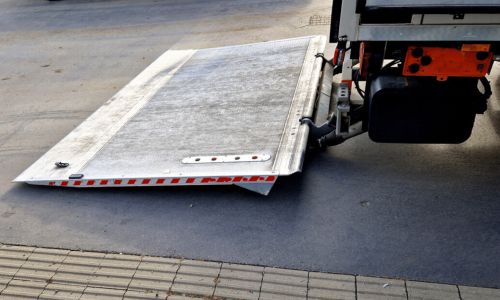Logistics Key Terms
Bill of Lading (BOL)
A legal document that serves as a receipt for goods shipped, as well as a contract between the shipper and carrier.
B2B (Business to Business): The transactions and interactions that occur between two or more businesses. It involves the exchange of goods, services, or information to support the operations and growth of businesses rather than individual consumers.
Carrier: A company or organization that provides transportation services, such as shipping, trucking, or air freight.
Consignee: The party receiving or taking delivery of the goods.
Consolidation: Combining multiple small shipments into one larger shipment to reduce the cost of transportation.
Cross Docking: A logistics process where goods are received at one dock and then immediately loaded onto outbound trucks, trains, or ships without being stored.
Customs Broker: An individual or company that assists with customs clearance processes.
Customs Clearance: The process of fulfilling legal requirements for importing or exporting goods.
Demurrage: Charges incurred when cargo remains in a port or terminal beyond the allowed free time.
Double Drop Trailer: Much like a step deck, but even lower to the ground, making it ideal for very tall freight. Max weight 62,000lbs
Dry Van: A regular, non-insulated, trailer. Usually has wood floors. Comes in various sizes. Most commonly used.
ETA (Estimated Time of Arrival): The expected time of arrival of a shipment at its destination.
Flat Deck: A trailer without walls/roof. Great for large shipments or for loading from the side. Commonly found in 53ft lengths with a max. weight of 60,000lbs, and max height of 8.5 feet
Forklift: A vehicle that is used to move freight. Usually powered by batteries or propane, they are equipped with forks that can lift freight. There are other attachments that can be used for various types of freight. The battery must be removed from the vehicle if you are transporting the forklift in an enclosed trailer.
Freight: Goods or cargo being transported.
Freight Forwarder: A company that organizes and manages shipments on behalf of shippers.
Freight Insurance: Coverage that protects against loss or damage to goods during transportation.
FTL<L: Full truckload (FTL) and less-than-truckload (LTL) are the two types of shipping, where FTL is a full truck dedicated to a single customer and LTL is a shared truck with multiple customers.
Heater Trailer: This trailer also has a “reefer” attached but is used only to maintain high temperatures to ensure goods do not freeze.
Intermodal: The transportation of goods using multiple modes of transportation, such as shipping containers that can be loaded onto trucks or trains for further transport.
Logistics: The planning and coordination of the movement of goods and materials, including transportation, warehousing, and inventory management.
Mode of Transport: The specific method of transportation used, such as truck, train, ship, or airplane.
Packaging: The materials and methods used to protect and prepare goods for shipment.
Pallet: A flat transport structure used to stack goods and facilitate their handling and storage.
Pallet Jack: A tool that is used in most warehouses to move pallets. The forks of the pallet jack go under the skid, and, while some are powered, a handle is used to pump and lift the pallet off the ground. Not all drivers will have this with them.
POD (Proof of Delivery): A document that confirms the delivery of goods and may include the recipient’s signature.
Power Tailgate (Lift Gate): A mechanical “lift” that allows the driver to bring freight from the truck down to ground level. Most lift gates can handle up to 2500lbs, and can only fit up to 8ft wide x 4ft deep pallets/crates.
Probill Number: A unique tracking ID# that the carrier issues and uses.
Reefer Trailer: This is a trailer that is temperature-controlled. Often used to keep frozen/fresh goods.
Shipper: The party sending or delivering the goods for transportation.
Skid/ Pallet/ Lift: These three terms refer to the same thing. Skids come in various sizes, whereas lifts are generally longer.
Step Deck: This is a flat deck trailer, however, after the first 12ft behind the cab, the deck drops a few feet and is closer to the ground. Great for oversize freight. Max weight 60,000lbs.
Super B Trailer: Most commonly seen as a flat deck style, Super B’s is a pair of trailers connected together (normally a 32’ lead trailer with a 28’ pup) with a maximum haul weight of 40,900kgs (90,000lbs).
Supply Chain: The network of organizations, activities, resources, and information involved in the flow of goods from the supplier to the end customer.
Tandem Vs. Tridem: This is in reference to the maximum weight a trailer can carry. Tandem trailers are the most common and can carry up to 17,000kgs (37,400 lbs) depending on the tires the trailer has. Tridem trailers can haul more, up to 24,000kgs (52,800lbs) depending on the tires.
Third-Party Logistics Company (3PL): A company that provides outsourced logistics services,
Tractor: This is the power unit or cab where the driver sits.including transportation, warehousing, and distribution.
Transit Time: The amount of time it takes for a shipment to reach its destination.
Waybill: A document that accompanies a shipment and includes details such as the origin, destination, and contents of the shipment.

explore logistics with Our complete shipping solutions Blog





